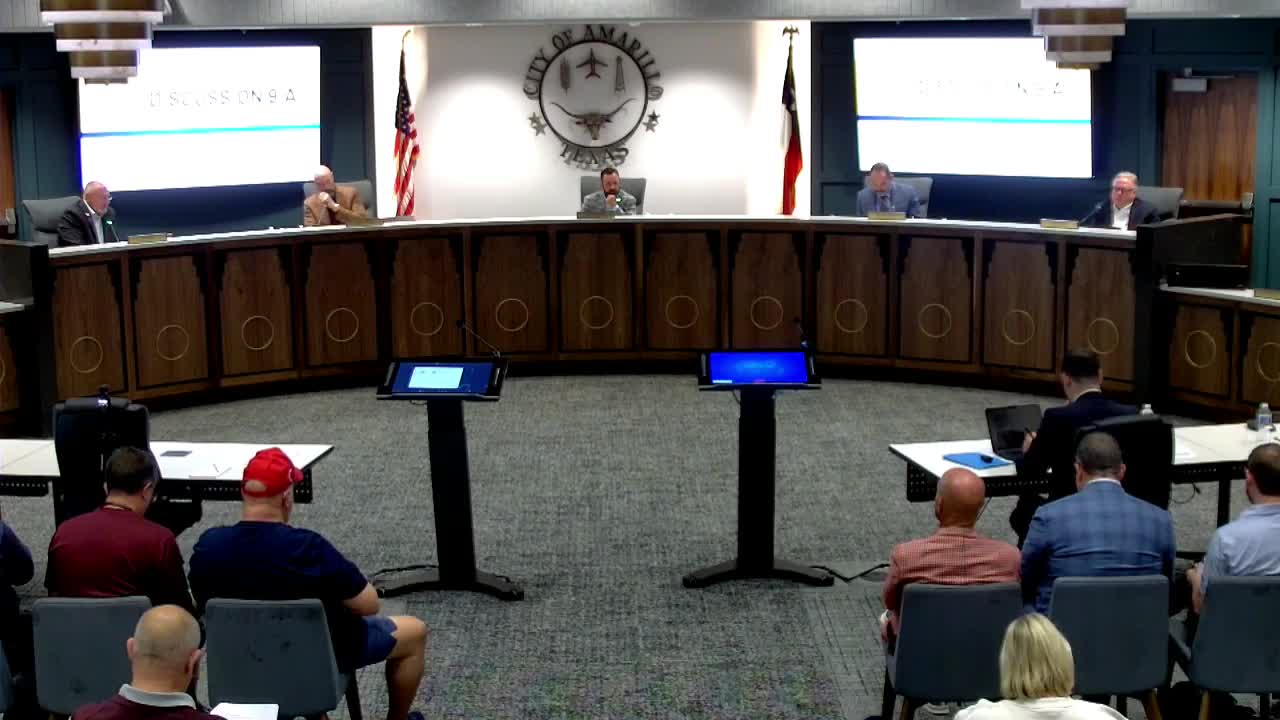Developer outlines plan to restore Herring Hotel as full‑service downtown hotel; council to consider incentives later
October 14, 2025 | Amarillo, Potter County, Texas
This article was created by AI summarizing key points discussed. AI makes mistakes, so for full details and context, please refer to the video of the full meeting. Please report any errors so we can fix them. Report an error »

A national team of historic‑rehabilitation developers and architects presented plans on Oct. 14 to restore Amarillo’s historic Herring Hotel into a high‑end, full‑service boutique hotel. The proposal calls for approximately 226 rooms, restored public ballrooms and meeting space, food‑and‑beverage venues including a rooftop bar and pool deck, and associated streetscape and façade improvements intended to catalyze additional downtown investment.
Why it matters: The Herring is one of the largest historic commercial buildings in downtown Amarillo and has been vacant for decades. Developers and architects said a successful rehabilitation would create a market‑rate, convention‑oriented hotel product that the city currently lacks, supporting nearby businesses and encouraging infill.
Details of the proposal
- Development team: Herring Hotel Partners LLC with Campo Architecture (New Orleans) and hospitality operator interest from a national management group (Aimbridge noted as an advisor in the presentation).
- Scope: 226 rooms (including suites and double‑queen rooms), restored second‑floor ballroom and mezzanine meeting spaces, first‑floor restaurants, basement food‑and‑beverage and service areas, and a rooftop public amenity with 360‑degree views.
- Capital budget: Developers estimate a total project cost of about $90–$100 million (presented as an approximate all‑in figure); staff said incentive requests are expected and would be considered separately.
- Proposed incentives: The team has discussed a mix of state and local incentives typically available near convention centers (state hotel/stay incentives and local Tier‑1 property tax rebate); the downtown tiers board and city staff discussed a $900,000 façade/streetscape grant and a reduced hotel occupancy tax rebate schedule in early drafts.
City steps and conditions: Staff and the development team said the project would come back to council for a Chapter 380 economic development agreement, a downtown TIRZ/tier developer agreement (subject to Potter County participation), and any required real‑property transactions (land lease/ownership transfers and leaseback arrangements needed to qualify for some state incentives). Staff noted the owner would seek to dedicate certain blocks and that a leaseback arrangement would likely be used during the incentive period.
Public cost and risk: City staff noted any direct grant payments would be performance‑based and tied to completed scope and verified receipts. The downtown tiers board would approve any property‑tax rebate and grant amounts; staff proposed a short, 10‑year tiers rebate in drafts rather than the longer terms used in other deals.
Timeline and next steps: The developers seek tiers and council consideration with a goal of design, permitting and construction scheduling that could continue through the next 12 months; staff listed tentative steps including tiers board review, county participation and a council vote on the Chapter 380 agreement on Oct. 28 in coming weeks.
Ending: The presentation emphasized the catalytic benefits of historic adaptive reuse while the council and staff signaled careful review of incentive terms and performance guarantees before any public subsidy is finalized.
Why it matters: The Herring is one of the largest historic commercial buildings in downtown Amarillo and has been vacant for decades. Developers and architects said a successful rehabilitation would create a market‑rate, convention‑oriented hotel product that the city currently lacks, supporting nearby businesses and encouraging infill.
Details of the proposal
- Development team: Herring Hotel Partners LLC with Campo Architecture (New Orleans) and hospitality operator interest from a national management group (Aimbridge noted as an advisor in the presentation).
- Scope: 226 rooms (including suites and double‑queen rooms), restored second‑floor ballroom and mezzanine meeting spaces, first‑floor restaurants, basement food‑and‑beverage and service areas, and a rooftop public amenity with 360‑degree views.
- Capital budget: Developers estimate a total project cost of about $90–$100 million (presented as an approximate all‑in figure); staff said incentive requests are expected and would be considered separately.
- Proposed incentives: The team has discussed a mix of state and local incentives typically available near convention centers (state hotel/stay incentives and local Tier‑1 property tax rebate); the downtown tiers board and city staff discussed a $900,000 façade/streetscape grant and a reduced hotel occupancy tax rebate schedule in early drafts.
City steps and conditions: Staff and the development team said the project would come back to council for a Chapter 380 economic development agreement, a downtown TIRZ/tier developer agreement (subject to Potter County participation), and any required real‑property transactions (land lease/ownership transfers and leaseback arrangements needed to qualify for some state incentives). Staff noted the owner would seek to dedicate certain blocks and that a leaseback arrangement would likely be used during the incentive period.
Public cost and risk: City staff noted any direct grant payments would be performance‑based and tied to completed scope and verified receipts. The downtown tiers board would approve any property‑tax rebate and grant amounts; staff proposed a short, 10‑year tiers rebate in drafts rather than the longer terms used in other deals.
Timeline and next steps: The developers seek tiers and council consideration with a goal of design, permitting and construction scheduling that could continue through the next 12 months; staff listed tentative steps including tiers board review, county participation and a council vote on the Chapter 380 agreement on Oct. 28 in coming weeks.
Ending: The presentation emphasized the catalytic benefits of historic adaptive reuse while the council and staff signaled careful review of incentive terms and performance guarantees before any public subsidy is finalized.
View the Full Meeting & All Its Details
This article offers just a summary. Unlock complete video, transcripts, and insights as a Founder Member.
✓
Watch full, unedited meeting videos
✓
Search every word spoken in unlimited transcripts
✓
AI summaries & real-time alerts (all government levels)
✓
Permanent access to expanding government content
30-day money-back guarantee

